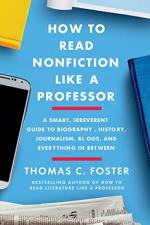
|
| Name: _________________________ | Period: ___________________ |
This quiz consists of 5 multiple choice and 5 short answer questions through Section 4: Chapter 13,"On the Stump" through Chapter 15, "Reading Internet Sources".
Multiple Choice Questions
1. In Chapter 6, "Source Code," what does Foster call the "gold standard" of sources (63)?
(a) Professional expertise.
(b) Eyewitness testimony.
(c) Expert sources.
(d) Statistics.
2. Using an argument like "Democrats just want to take your guns" in an address to a gun rights organization in a heavily Republican area would be an example of which flaw in argumentation?
(a) False analogy.
(b) Preaching to the choir.
(c) Glibness.
(d) Cherry-picking.
3. In Chapter 9, "Living the News," what historical era does Foster tie New Journalism to?
(a) World War Two.
(b) The Great Depression.
(c) The counterculture movement of the 1960's.
(d) The "Reagan Revolution" of the 1980's.
4. In Chapter 8, "Bringing the News," one of the main points that Foster wants to make about All the President's Men is what?
(a) It is unusual for people to write about themselves in the third person.
(b) Woodward and Bernstein used too many anonymous sources.
(c) All the President's Men is a work of nonfiction.
(d) Woodward and Bernstein faced serious obstacles in investigating the Watergate story.
5. In Chapter 10, "From the Inside Out," what document does Foster call the "ultimate political expression of [the] Enlightenment insistence on the individual" (146)?
(a) A Room of One's Own.
(b) The Declaration of Independence.
(c) Essay Concerning Human Understanding.
(d) Apologia Pro Vita Sua.
Short Answer Questions
1. In Chapter 9, "Living the News," which authors does Foster point out as not engaged in New Journalism?
2. In Chapter 11, "Life from the Inside," what form does Foster say takes its name from the French term for reminiscence?
3. In Chapter 1, "The Structure of Nonfiction Information," what does Foster say is the purpose of the "four Ps?"
4. Based on Chapter 14, "The Universe of Ideas/Ideas of the Universe," what would Foster call a neuroscientist reporting on and analyzing recent developments in neuroscience?
5. In Chapter 11, "Life from the Inside," what does Foster call the "most famous" African American autobiography (171)?
|
This section contains 368 words (approx. 2 pages at 300 words per page) |

|




